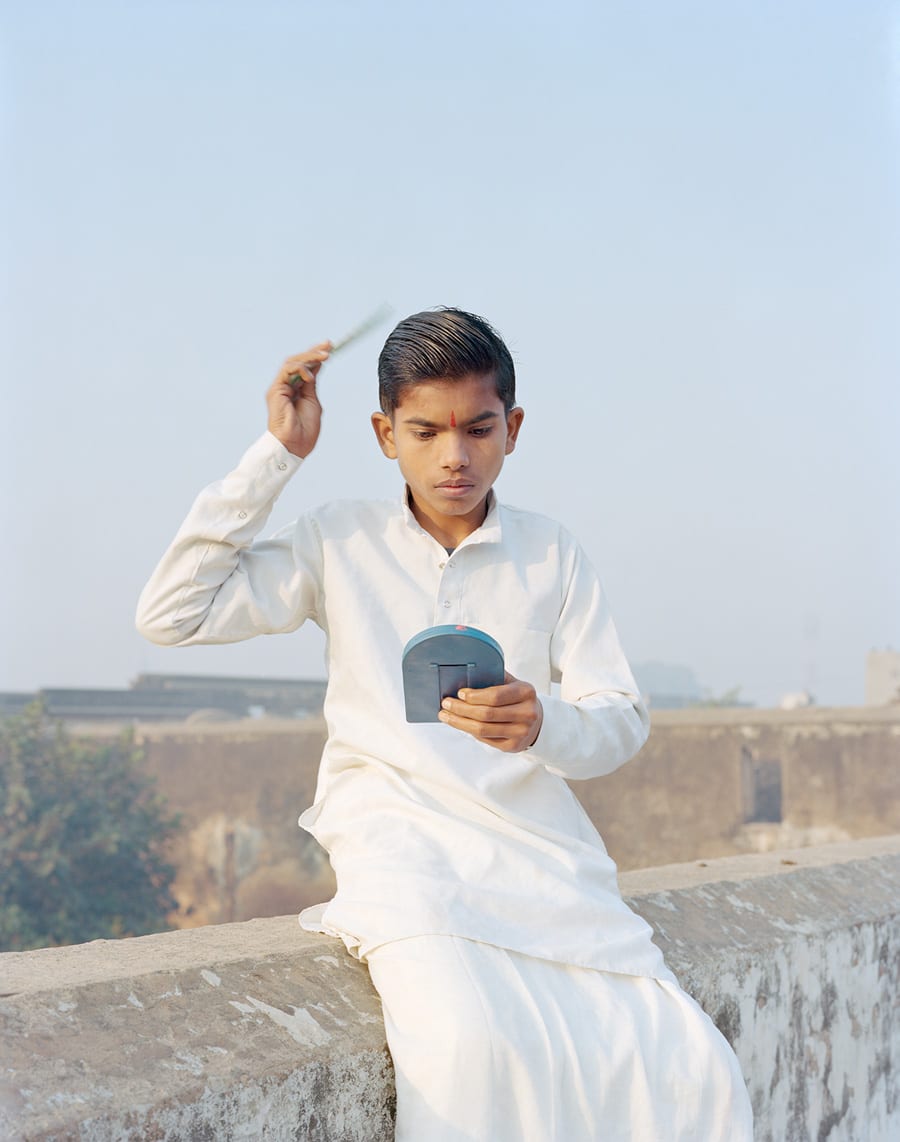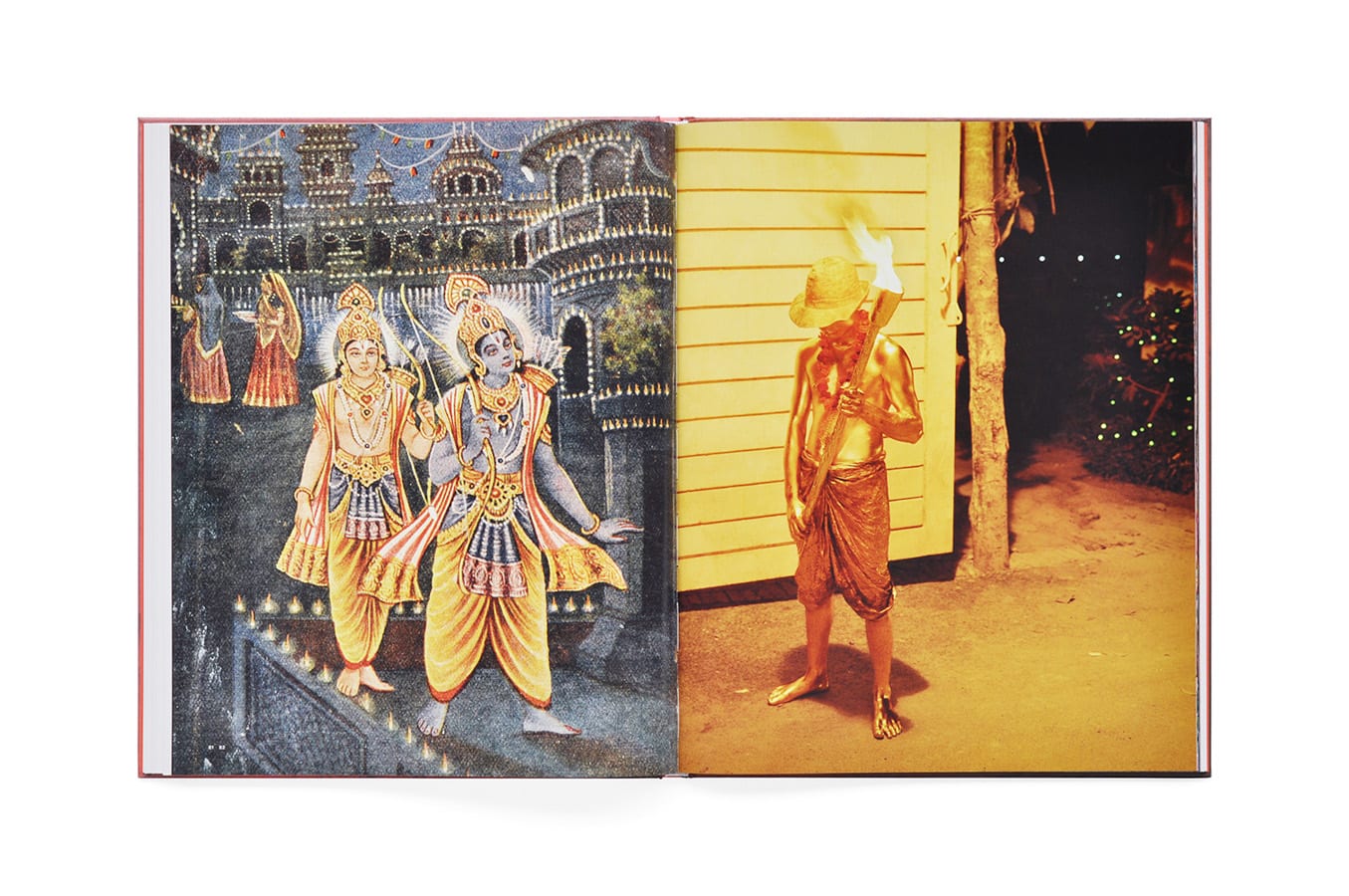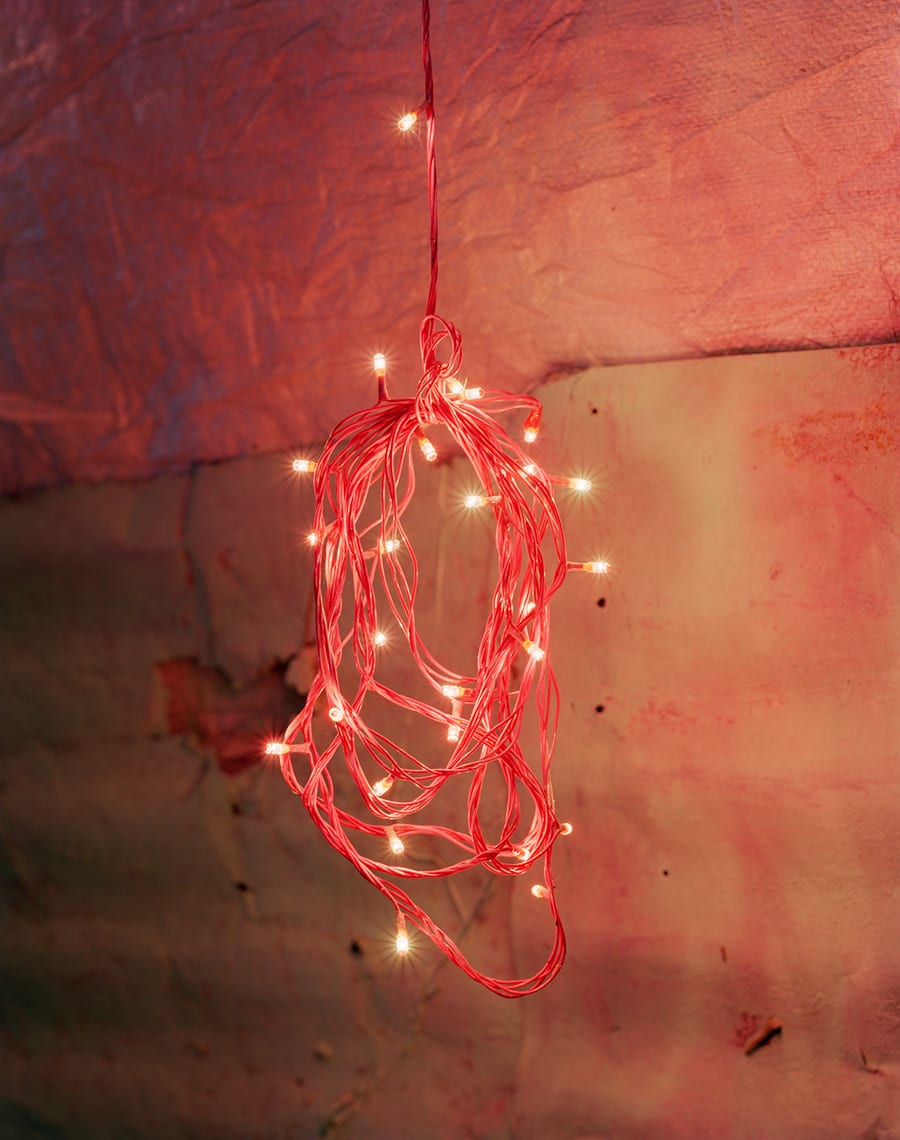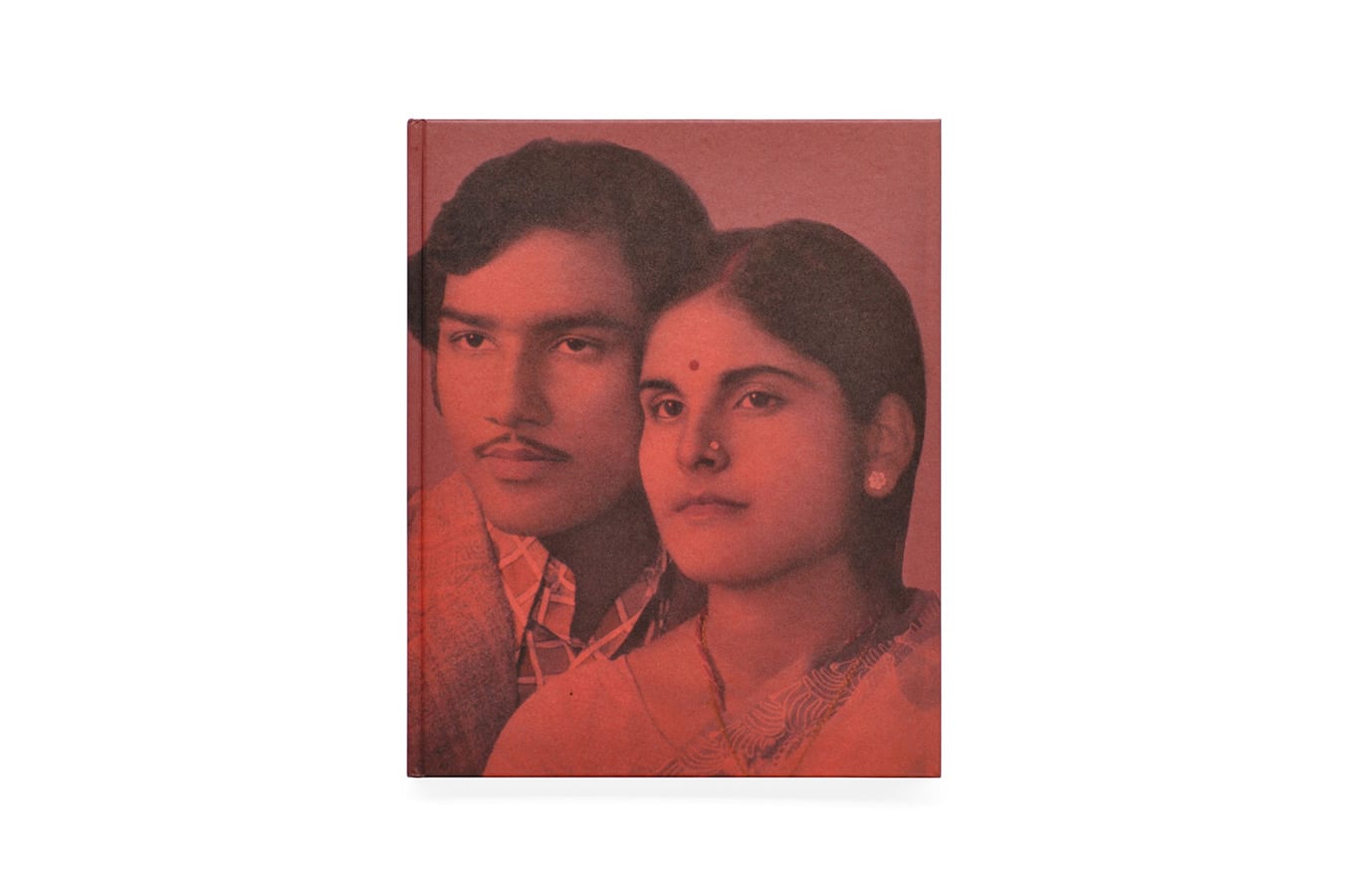“To me, The Ramayana is not only about Hinduism, it is about life in the first place. About love, loss, family, honor, success and failure… Things we all experience in our life, no matter your beliefs, religion, etc.”
A Myth of Two Souls is a long-term project by Vasantha Yogananthan. It is a part-documentary, part-fiction work-in-progress, a projected volume of seven books set to span the main parts of an epic Indian mythological poem, The Ramayana. The story is a popular classic that hugely pervades South Asian culture and influences everyday narratives through religion, tradition, morality and ideology. In the story the central character, Rama rescues his wife Sita from the clutches of the evil Ravana who abducts her. It is a basic precept for a long and complex tale of familial and external relationships, what comes of ones words and deeds, love and loss, promise and honor, life, struggle and death. Yogananthan uses this epic to reflect upon contemporary India and the West’s relationship to it through his subjectivity and approach. I caught up with him after the release of the third part, Exile.
Sunil Shah: Can you tell me a little about where the impulse came to make a body of work around the epic story of The Ramayana?
Vasantha Yogananthan: Back in 2013, before leaving for a trip to India I bought a few books about the country, among them The Ramayana. I read it while travelling in Tamil Nadu, and I started noticing things in everyday life relating to the myth. I had vague memories of the epic because my dad used to have the Amar Chitra Katha comic book version of The Ramayana at home. I remember loving these comic books a lot during my childhood, although I did not read any English.
The pictures from that first trip in 2013 were a disaster. I got only 2 or 3 good photographs in a one-month trip. I came back to Paris realizing I had found a story but without a visual concept. I started reading different versions of the myth. I bought Ramayana related stuff on Ebay: old books, vernacular pictures, lithography, etc.
SS: What does the story mean personally to you and how has this shaped your approach and concept for the project?
VY: I am very interested in its philosophy. I am an atheist and I am not so interested in religion. To me, The Ramayana is not only about Hinduism, it is about life in the first place. About love, loss, family, honor, success and failure… Things we all experience in our life, no matter your beliefs, religion, etc. This understanding of the epic is surely influenced by the fact I am French. Coming from the West, travelling extensively around India makes you look at life from a different perspective. It makes you question things you don’t question while living in Europe.
As most Westerners don’t have any common cultural background with India, it can be hard for them to relate with The Ramayana. It requires an extra level of involvement that few people are willing to make in this era of fast consumption of stories and information. I believe that emphasizing on its philosophy rather than on its religious side makes it more accessible. The greatest challenge of the project is to bring a new vision on that story to an Asian audience, while making it accessible to a western audience which has never heard of it.
SS: Three of the books from the series have now been published. Are large parts of it already completed?
VY: Well, the project started in 2013 and I have already made 7 trips, so a large part of it is completed. On the other hand, the project is still completely a work in progress. I am going to India twice before the end of the year to complete chapter 4 & 5. I have these 7 folders on my computer which keep filling up each time I come back from India. As I am working on more than one book at the same time the production of the pictures relates closely to the book making process. We will publish 7 books and each one needs to be different. I am trying to figure out as early as possible a visual strategy for each chapter.



SS: What are your thoughts on having, as you say a ‘common cultural background’ and yet being in some respects an outsider when visiting India. I’ve felt that myself, being Indian and both connected and somewhat disconnected to the country on the few visits I’ve made there. Has The Ramayana provided, for you, a way of reconnecting with your heritage or a way of finding a common ground between the displacing effects of generational diaspora?
VY: My father is from Jaffna, Sri Lanka, and my mother is French. When I started the project – even though I have a Tamil heritage – I did not know anything about India and was a complete stranger/outsider.
I think The Ramayana gave me a ‘key’ to enter a different Indian time and space outside of everyday life. Without that story, I could have spent years scratching the surface. I got attracted by the story when I realized that in India it was neither considered as a fiction nor a documentary. It sits on a blurry line that does not exist as such in the West.
I think being a foreigner has allowed me to tackle a very sensitive subject – not realizing at first what I was getting into. I do read a lot about everything that is going on around The Ramayana – and I am well aware of its political use by the BJP and Modi to promote the ‘Hindutva nation’. Some of my Indian friends are pressing me forward to tackle these political issues. It is as if they can’t see the poetic or philosophical side of the epic anymore, because the misappropriation of the text has overcome the text itself. Though I plan to tackle very political issues – especially in the final chapters of the project, which deal with war, rape, honor and death – I want the project to be multi layered, be it from an editorial or aesthetic point of view. This is not a documentary project and I am not here to state The Ramayana is good or bad. I wish to provide a modern retelling of the myth and raise questions while doing so.
If I was speaking about common cultural background it is also because, for the first time, I find it difficult to “satisfy” different audiences with the same work. For example, I have often received critics in India about the books being too literal, whereas I have often received critics in the West about the books being too metaphoric! One could see that the audience is reading the pictures and text with their own cultural heritage.
I think having a double heritage allows me to be in a very interesting place. On one hand, I don’t feel at ‘home’ when I am in India, but on the other hand people don’t see me as a stranger either – because I do look Indian. I am a strong believer of long term projects. If I don’t feel as a stranger in India anymore, it is because I have been travelling there extensively for the past five years.
“Some of my Indian friends are pressing me forward to tackle these political issues. It is as if they can’t see the poetic or philosophical side of the epic anymore, because the misappropriation of the text has overcome the text itself. “

SS: Yes, and this provides a good case of how notions of authenticity and accuracy can be problematic. Based on an ancient text, as with all mythological texts The Ramayana will be subject to many tightly guarded interpretations, I suspect at times, proving to be very contested terrain in which to work. It is a story that provides many of the moral and social codes lived by in South Asian societies, from within popular culture, to politics, to how one should deal with common day-to-day interpersonal relationships and situations. It contains archetypal domestic and social roles: the father, the mother, the wife, the son, the friend, the enemy etc. We live in an age where there is an increasing tendency to resist fixed roles and identities yet I can see how a more conservative ideology would want to maintain them and the structures in which they exist. Is this aspect a tension or conflict you have seen in Indian society, that may be adapted from The Ramayana or is there a tendency to maintain its original premises and reflect upon how these can be poetically represented in the contemporary moment? For this reason perhaps working in a more metaphorical way suits the ability to allow multiple subjectivities to co-exist as opposed to a satisfying a specific group or person’s cultural experience?
VY: Exactly. As every mythological text, The Ramayana is subject to various interpretations, very often at odds with each other.
The archetypal role of the Indian wife is a good example. If you talk to women living in modern cities, they will most likely tell you the epic is patriarchal and that its heroin, Sita, has been treated harshly by her husband Rama. After all, he is the man deciding of their fate, and she is only his “shadow” in their long journey. Sita is seen as a victim, a weak woman. Now, if you speak to women in Bihar – one of the poorest and more patriarchal state of India, where women are still supposed to stay at home – one could think women would also see Sita as a victim. In fact, it is quite the opposite. Sita is a model to them. She is strong and she often decides on the couple’s fate in the epic. She is the one telling Rama she will go with him in the forest when he is banished from his kingdom. In Valmiki’s version, they argue for a very long time, and she is the one winning at the end. In the epilogue of The Ramayana – after Sita has already proven her “purity” – she refuses to enter the fire once again when Rama asks her to do so. Her life is full of hardships but from the start to the end of the story she is a strong woman. Travelling through India, one can realize women perceive Sita’s character differently from state to state.
In Mumbai and Delhi, female writers have been publishing retellings of the myth from Sita’s point of view. Putting the narrative upside down allows them to ask new questions to the readers – about Sita’s feeling, about Sita & Rama’s relationship, etc. Everyone can use The Ramayana to communicate a message – the story being so open to interpretations.
The husband-wife relationship at play in The Ramayana still holds strong in contemporary India. At the beginning of the project, I did an interview of a young couple in Delhi and they told me: “when we face a difficult situation, we try to think of what Rama & Sita would have done “.
It is quite fascinating that characters in The Ramayana are not “good” or “bad”. Ravana is not a bad guy, he falls in love with Sita and then tries to seduce her. On the other hand, Rama and Lakshmana cut Ravana’s sister nose with brutality. They had no reasons to do so and they seal their fate by acting wrong. Their violent act marks the end of happiness. Everything that happens in The Ramayana is about fate. Whatever you do is going to modify your destiny. Again, this is something which does not really fit in the western cultural background.
Another example is the use of religion by politics. It is a fact that BJP uses The Ramayana in conservative states (such as Bihar and Uttar Pradesh) to convey an ideology which is anything but progressive. When embarking on the project, most of my Indian friends warned me about the tensions between Muslims and Hindus. But after 5 years of work and many travels, I find this issue is less black and white than what you read in newspapers.
The staged picture of a young girl playing Sita just before she gets abducted, is a good example. My assistant and I were visiting schools in a small town in Karnataka, to cast young people willing to pose in the pictures. This girl really wanted to do it and she was only 16. The teacher called her parents and they were happy with the idea, they even came to the shoot with us. The girl is Muslim. She knows The Ramayana pretty well as do many Muslims. Making that picture was a lot of work and preparation but it did not pose any problem. A lot of actors playing during Dusserah all over India are Muslims. This means the myth is not only dividing the two communities, as you often hear, it is also reuniting them.
I do think working in a more metaphorical way gives more space to the reader to think and make his own opinion. This is why the story I just told you – about the young Muslim girl playing Sita – will not appear in the books or exhibitions (it could have been included in a caption). I think it would narrow dramatically how people would read that photograph. I think building a narrative through multiple voices is crucial to the project. This is why I decided to work only with Indian female writers. To have The Ramayana told by women, not by men. It is a political statement.
“I think building a narrative through multiple voices is crucial to the project. This is why I decided to work only with Indian female writers. To have The Ramayana told by women, not by men. It is a political statement.”

For Better Or Worse, Janakpur, Nepal, 2016


SS: How did you find writers and artists to collaborate with? Where you looking for a particular aesthetic or did that reveal itself to you?
VY: It is a mix of me searching specifically for artists & writers, and sometimes chance encounters. For Early Times, the idea was to draw inspiration from children books, be it for the text or the design. This is why I picked Anjali Raghbeer, who is a children book writer. For The Promise and Exile, I have been collaborating with Arshia Sattar, a Muslim Indian writer who is one of the greatest Ramayana scholars in India. She is the one who did the Valmiki’s translation from Sanskrit to English for Penguin India. She also wrote a very interesting book untitled “Lost Love”.
Having read both her Valmiki’s translation and her essays about the Ramayana, I was sure she was a good writer. She knows the myth by heart and at the same time keeps questioning it. From the start she was very excited to work on the project and our collaboration is getting stronger from book to book.
I also met a young artist couple while travelling to Sita’s birthplace in Bihar. They work in the Madhubani tradition though they paint modern subject. I commissioned them for the cover of Early Times. After that first commission I thought it would be interesting to send them a set of black and white prints and see what they would do with them. This is how our collaboration started, with the idea of doing “illustrated photography”, adding elements to the pictures using black pencils. We are working around the idea of illusion: is photography really showing “reality”? People usually never notice that one of the last pictures of Early Times, the wall with trees, is actually an illustrated photograph…
Another artist I worked with is Jaykumar Shankar, introduced via the Alkazi Foundation in New Delhi (the foundation has the largest collection of vintage hand-painted photographs of South Asia). Jay comes from a family of painters and he is very talented. He works with a carte blanche approach and as he was not with me during my shooting, the colors he ends up using are always different from what they were in reality.
About the aesthetic, it is actually funny because Jay has a tendency to go towards pinkish skies and very soft and muted colors. As a result, the hand-painted photographs dialogue very well with my own color photographs which use a pastel color palette. I wanted the hand-painted photographs not feeling “Bollywoodish”. Again, the idea is to confuse the reader. Is he looking at real photographs or something between painting and photography?



SS: I think this aspect of the project definitely lends it a great deal of strength in collaboration. What could be a purely subjective experience or voyage of discovery of unfamiliar nation and its people, becomes one immersed in the interaction between your own creativity and that of the people you encounter. I like this embracing of indigenous culture as opposed to subjecting it only to a Western perspective – often considered more advanced and superior.
VY: I like to think the project as a “team project”. Even if I do commission artists & writers, they have carte blanche and they are free to express their own view of The Ramayana. This is what leads to a retelling of the myth through multiple voices, which I think is much more interesting than just passing by my own experience as a foreign traveller in India. Designers Kummer & Hermann also bring their own vision linked to their own cultural background. In the end, the project is made possible through a French editor (Cécile Poimboeuf-Koizumi, co-founder of Chose Commune), Dutch designers, Indian writers & artists…
The Madhubani artists have often told me since our collaboration started that this project has pushed them outside of their comfort zone. The dialogue initiated with Indian artists has also pushed me outside of my own comfort zone. It is easier to take picture by yourself and control everything. Working in a collective spirit is very demanding and time consuming, but it is very fulfilling in
the end.
(All Rights Reserved. Text @ Sunil Shah. Images @ Vasantha Yogananthan.)






























